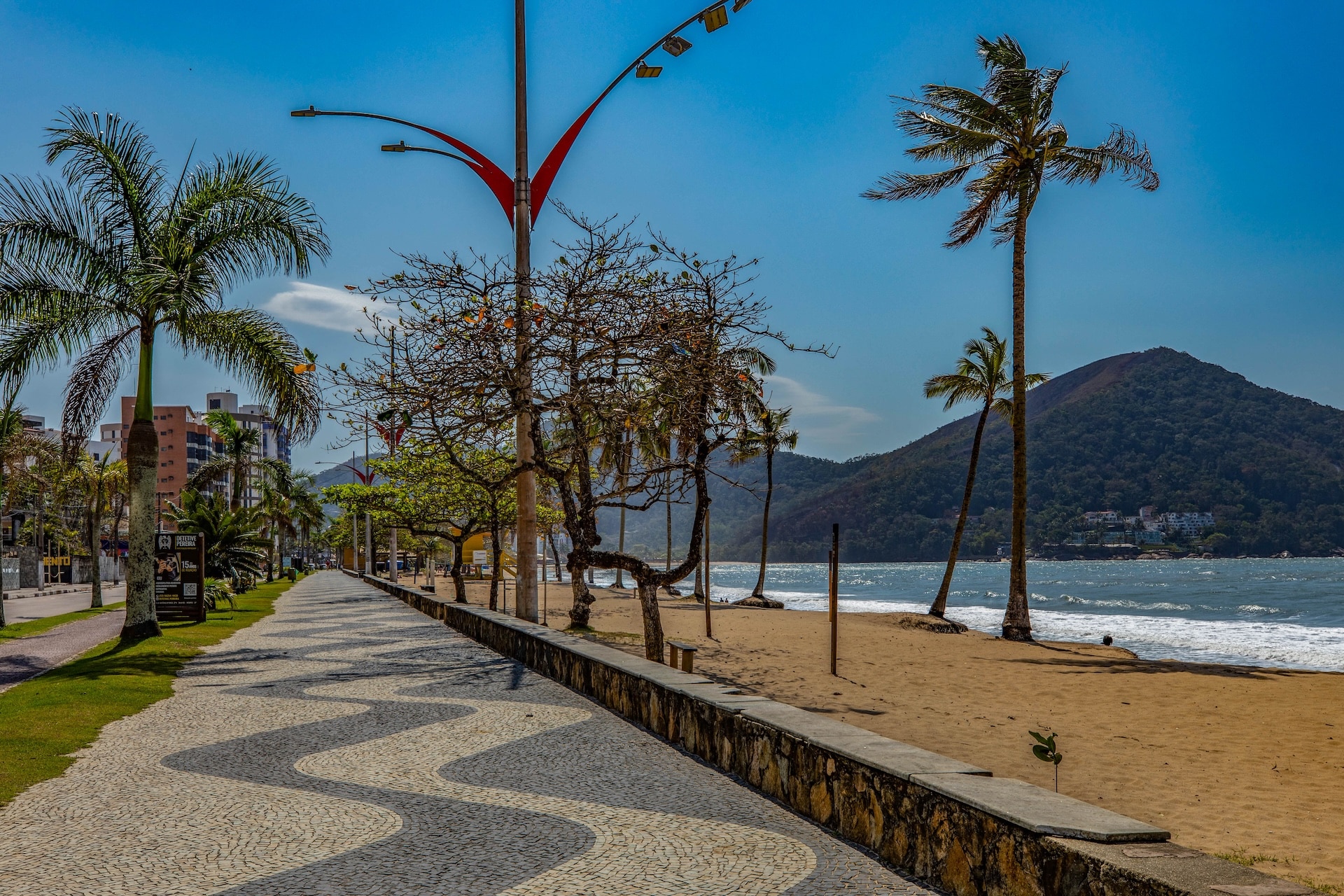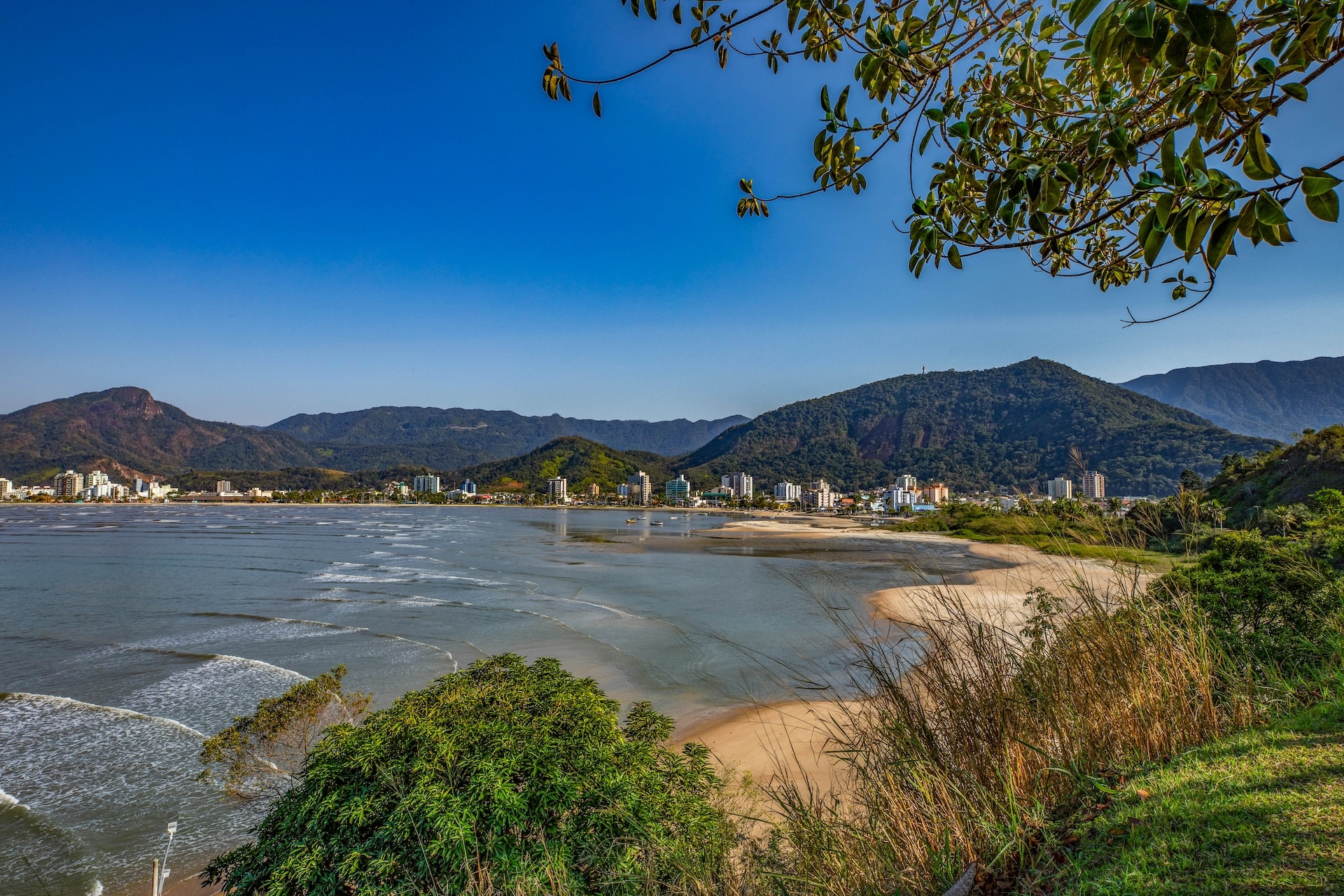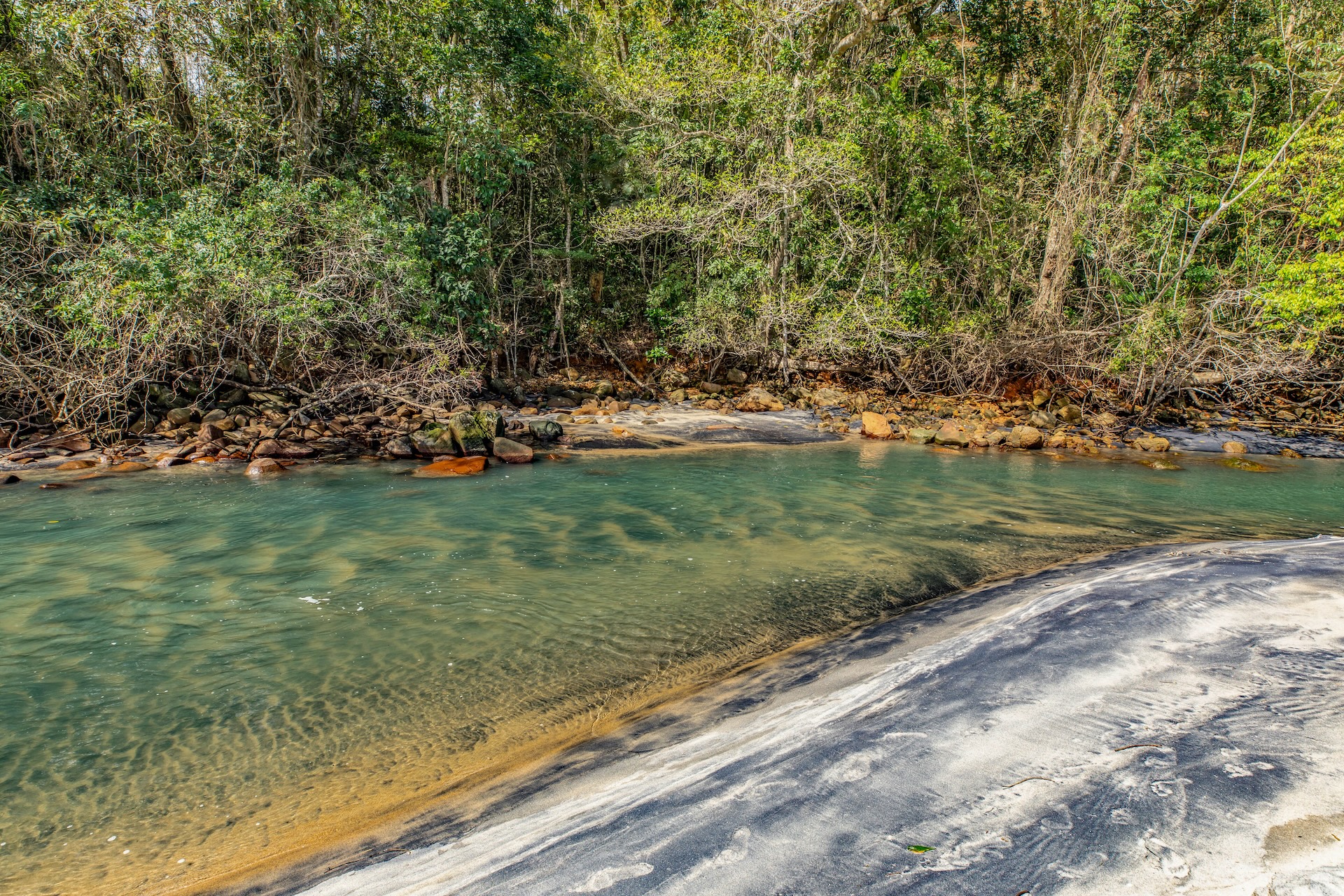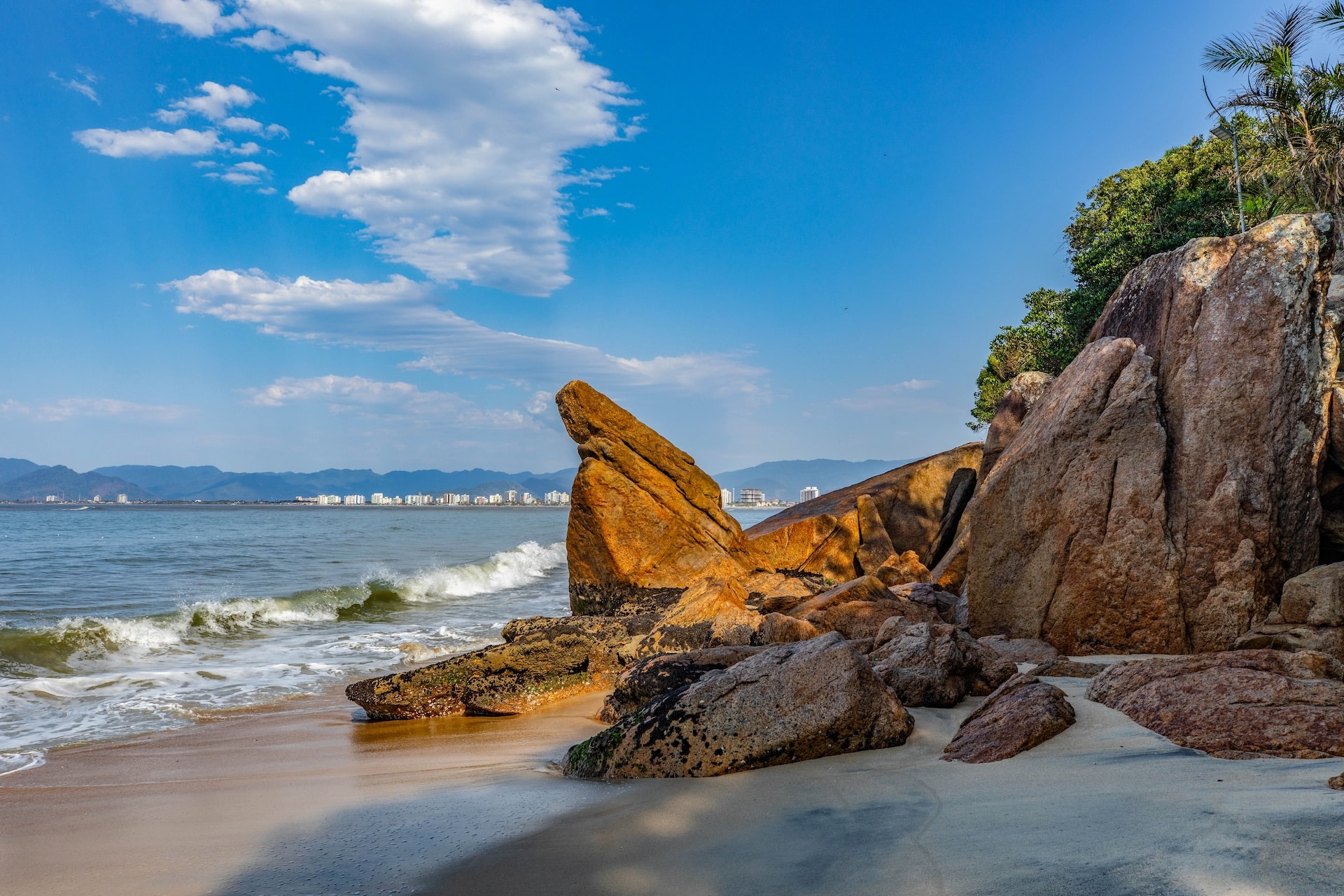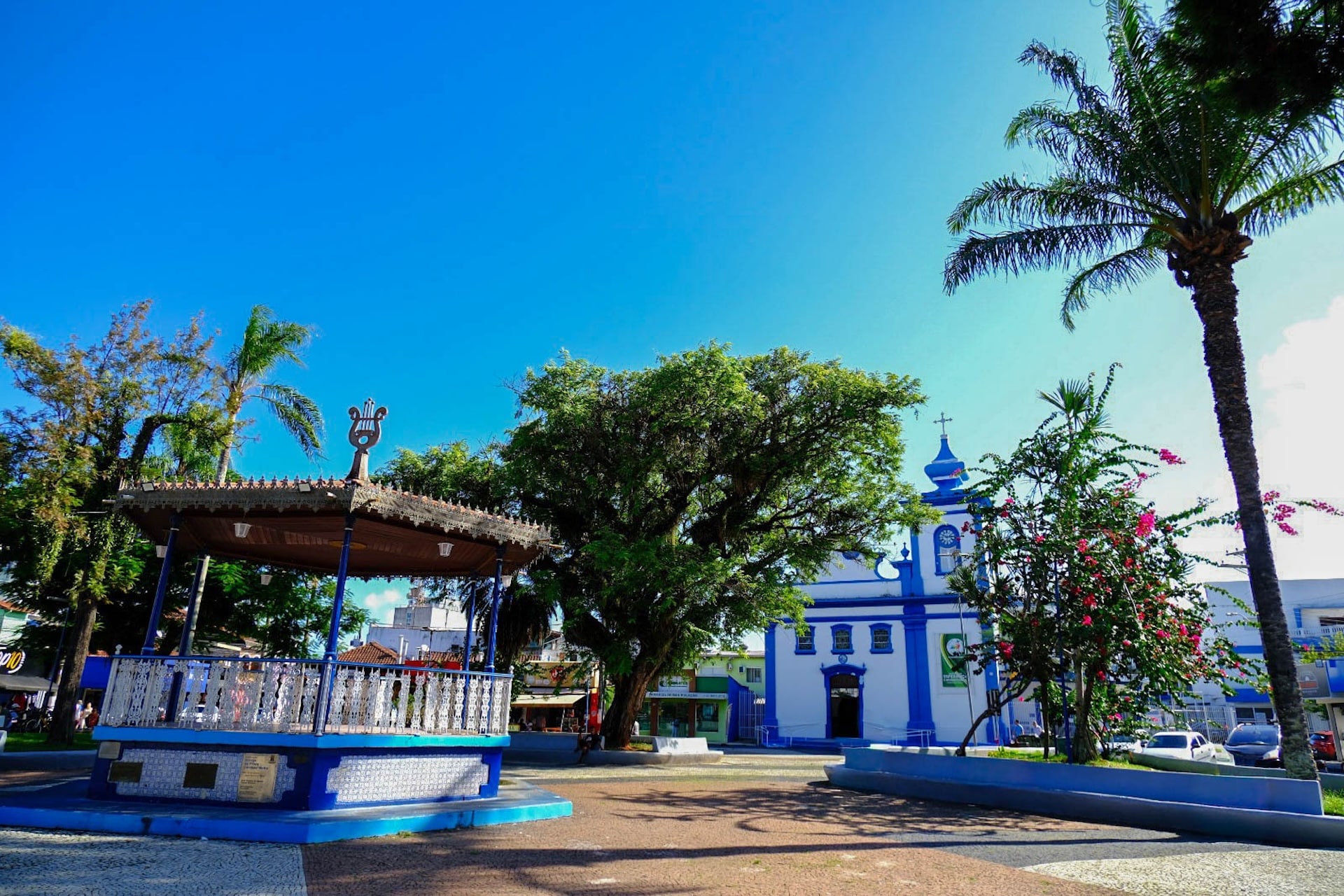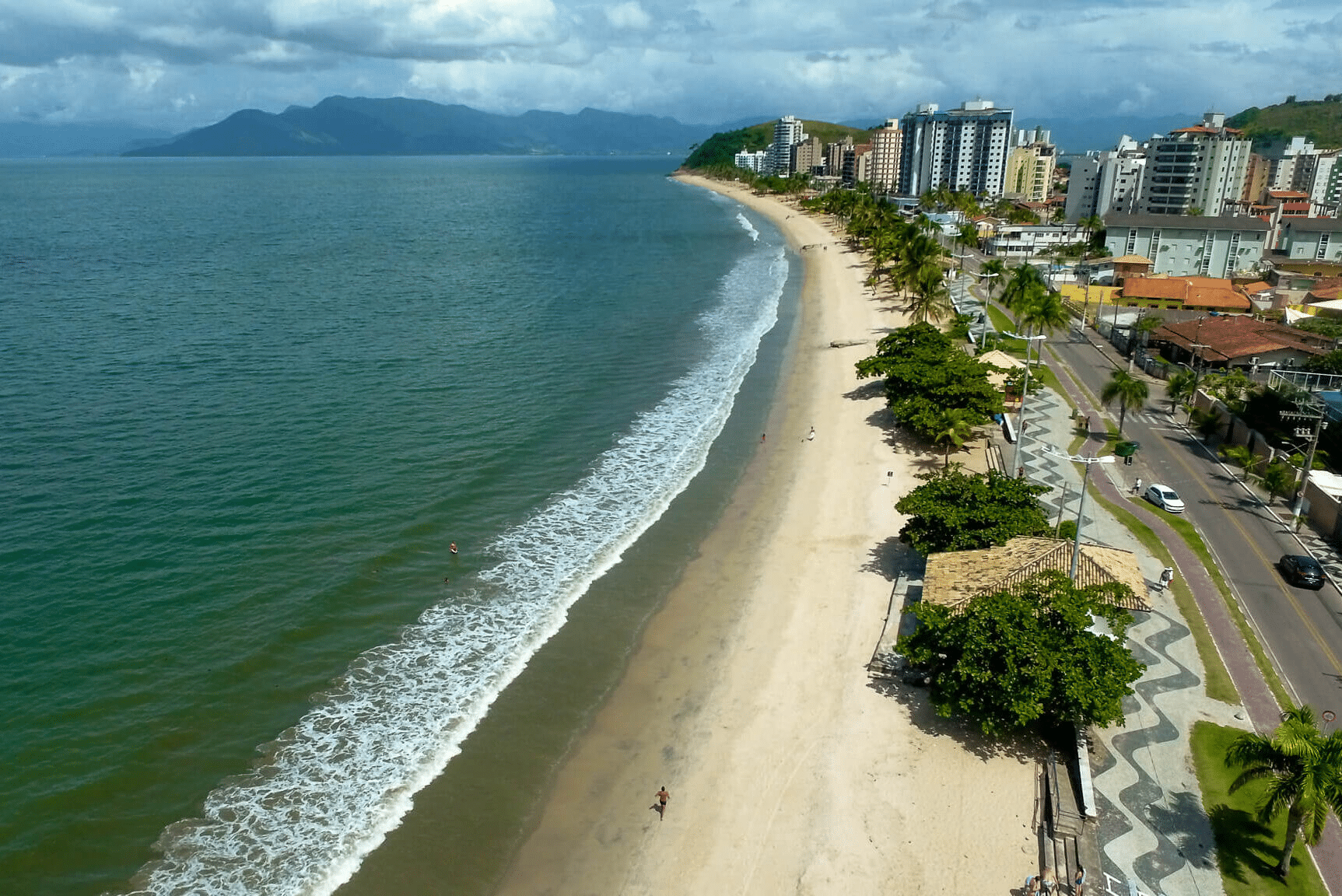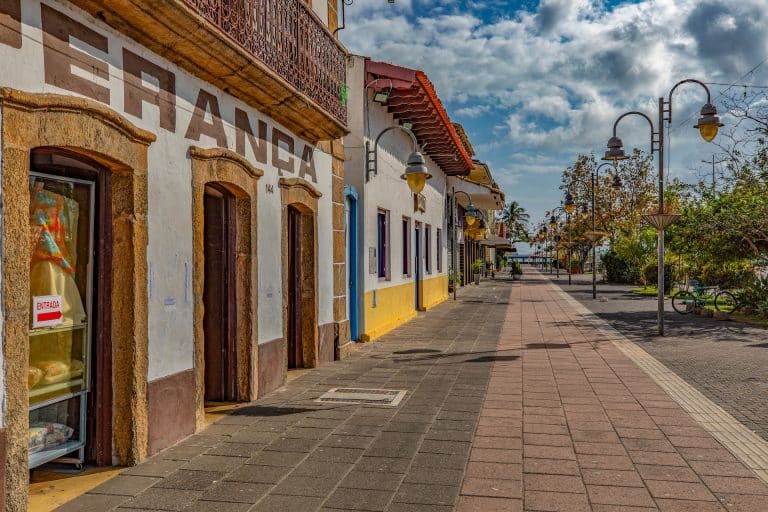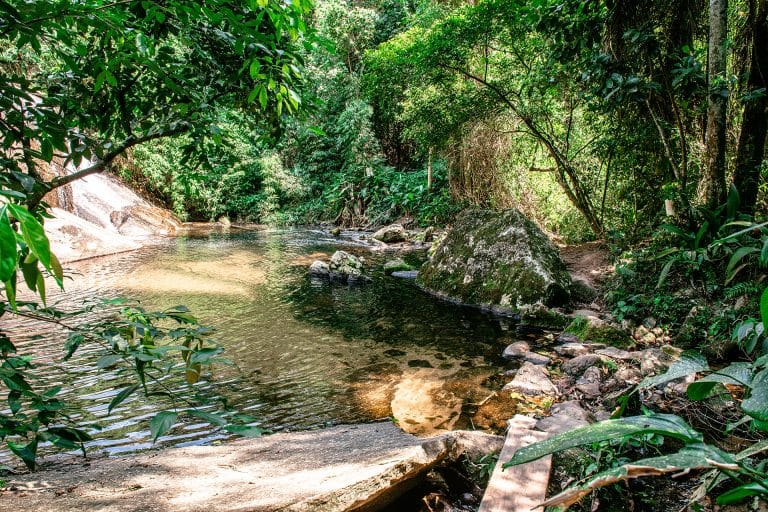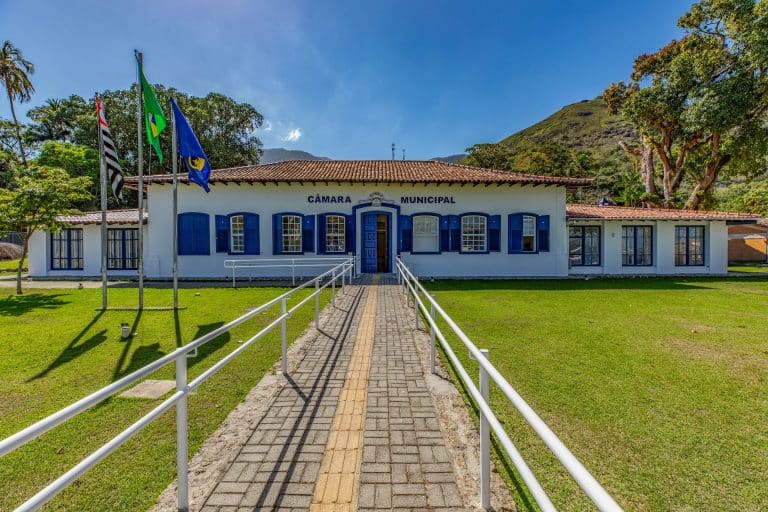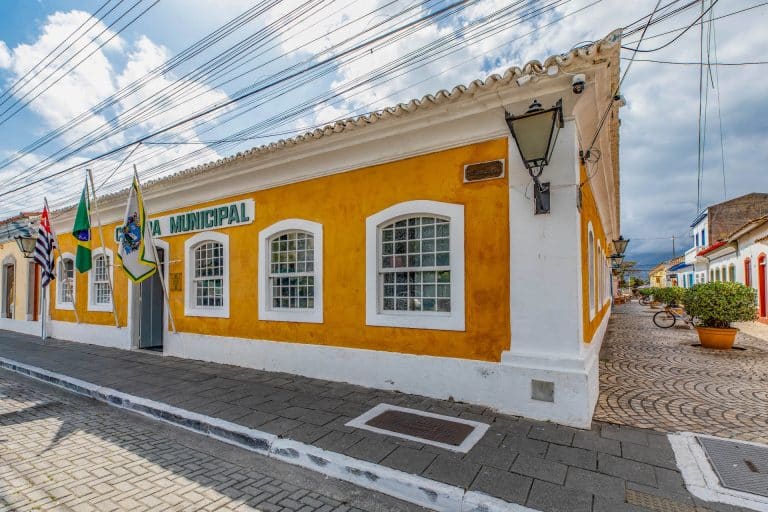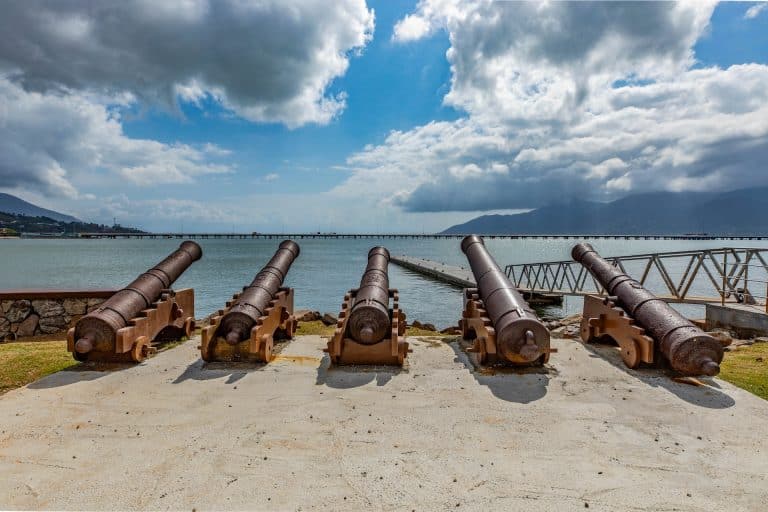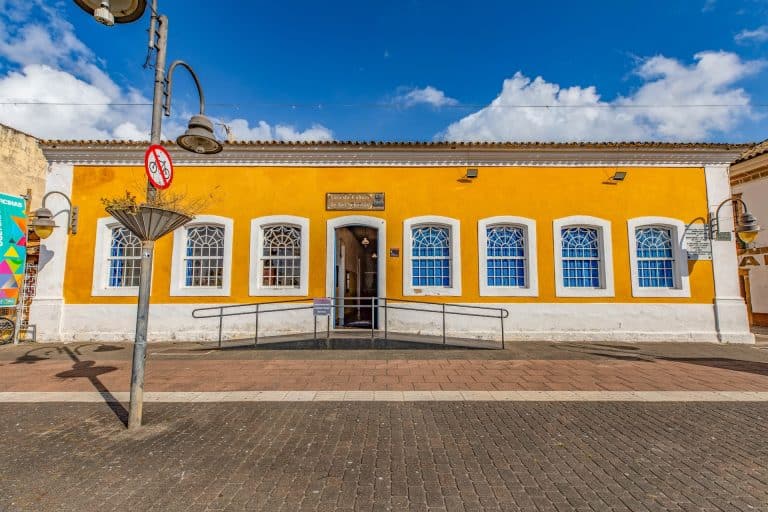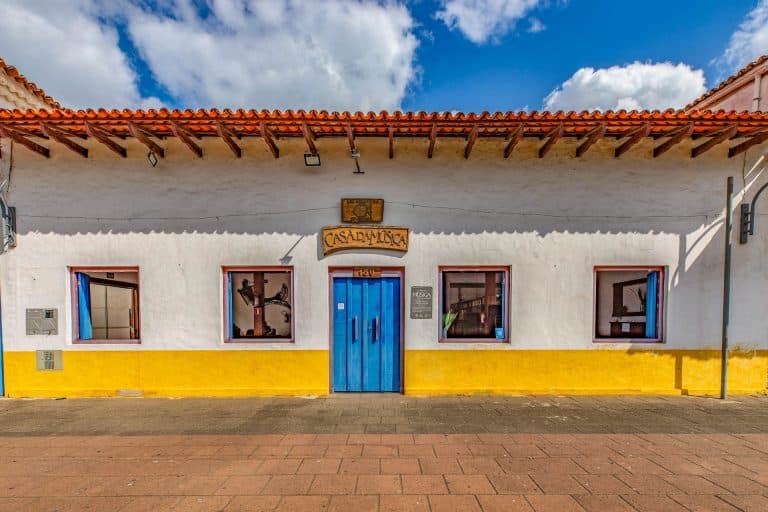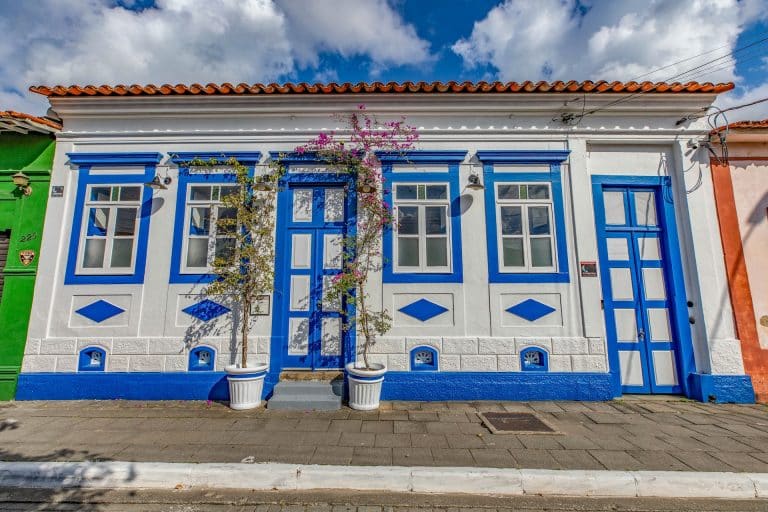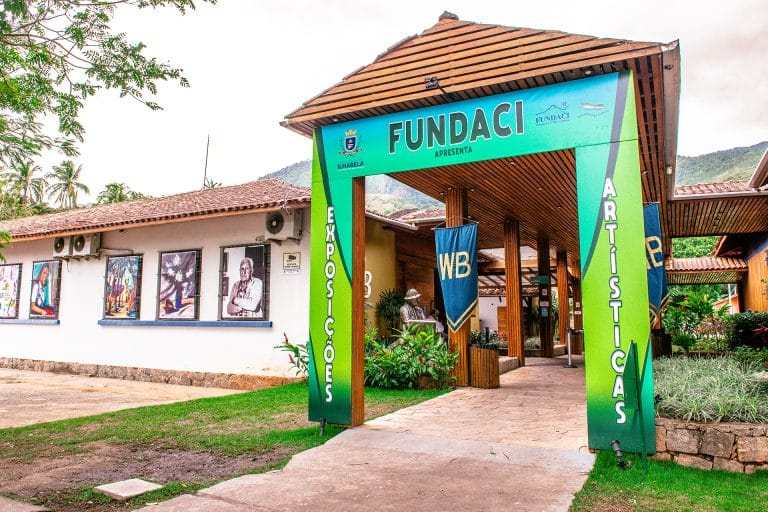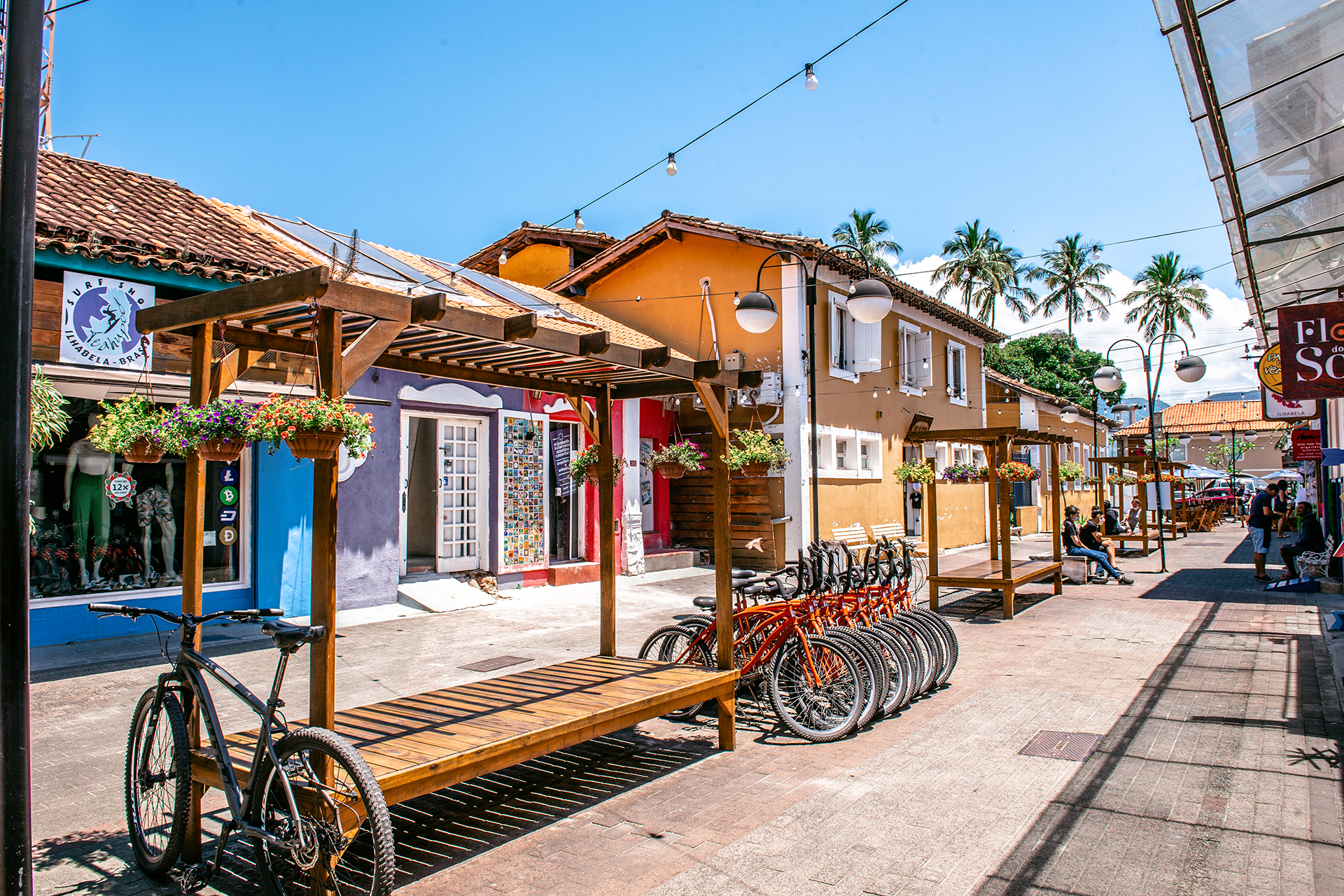Nestled between lush green mountains and the sparkling blue sea, Caraguatatuba traces its name to an Indigenous expression combining “caraguatá” [bromelia pinguin]—a plant whose fibers were used by missionaries to make sandals—and “tuba” [abundant]—“abundant caraguatá.” A city shaped by both nature and history, Caraguatatuba’s origins trace back to the 17th century. It began to be settled when the Portuguese Crown, through the sesmarias system, granted land to colonists, who started cultivating the fertile region. Officially established in 1857, it went on to become the capital of São Paulo’s northern coast and today offers a variety of unique backdrops for film and television.
In the historic center, the Igreja Matriz de Santo Antônio stands as a testament to the city’s rich past. Originally a small chapel used by bandeirantes, or frontiersmen, it grew in significance as the village expanded, eventually becoming a defining symbol of the city. Its stunning blue-and-white colonial façade invites visitors to step back in time and experience the 17th century.
Located on the Atlantic Coast, Caraguatatuba is blessed with stunning natural beauty, including several well-preserved natural areas. Among these is Mococa Beach, bordered by dramatic rocky headlands and lush coastal vegetation. The Mococa River meets the sea at the beach’s edge, creating a striking contrast where its fresh water mingles with the salty ocean. A few miles inland, by the banks of the Juqueriquerê River, lies the Parque Natural Municipal do Juqueriquerê, a 35,000-square-meter nature park. Opened in 2023, this protected area invites visitors to explore its trails, a birdwatching observatory, an orchidarium, and dedicated spaces for research and exhibitions.
At 325 meters above sea level, Santo Antônio Hill offers sweeping panoramic views of Caraguatatuba Bay and the islands of São Sebastião and Ilhabela. At its summit, a statue of the city’s patron saint overlooks a ramp for hang gliding and paragliding enthusiasts.
Founded in 1636, São Sebastião still bears the marks of its strategic role in defending São Paulo’s northern coast. The cannons lining the main street of the town’s historic center serve as a reminder of its battles against invaders who once used the nearby island as bases to plunder settlements. As the oldest city in the northern coastal region, São Sebastião’s early growth was fueled by agriculture, fishing, and sugarcane mills.
The Aldeia Indígena Rio Silveiras is home to a permanent Guarani community, direct descendants of the Indigenous peoples who lived in the region before the arrival of Europeans. Nestled within the Serra do Mar mountain range, the village maintains a traditional lifestyle centered on fishing, farming, and environmental stewardship. This authentic setting makes it an ideal location for film productions.
Since 1955, the Port of São Sebastião has benefited from its strategic location in a protected bay. This position has been key to the flow of goods since the colonial era. Spanning over 270,000 square meters, its four yards include customs-bonded areas for general cargo, sugar, and bulk, as well as non-customs-bonded areas for solid bulk. The industrial landscape, in contrast with the natural surroundings, attracts producers seeking authentic and versatile settings for filming.
Known as the “Pearl of the Atlantic,” the Municipality of Ilhabela, founded in 1805, is part of a marine archipelago. Roughly 85 percent of the territory is preserved within the Parque Estadual de Ilhabela, home to forests, waterfalls, beaches, and the rich ecosystems of the Atlantic Forest. The municipality is also one of the state’s fifteen official resort towns.
Art and nature meet at the Complexo Cultural Baía dos Vermelhos. Surrounded by native vegetation and facing the sea, the culture center features performance halls, open-air amphitheaters, and artist residences, all of which blend in with the center’s natural surroundings to create a singular setting.
Just minutes away from the island’s historic center, Saco da Capela Beach comes alive with boats and sailboats, offering one of Ilhabela’s most iconic sights.
Filming in Caraguatatuba and the surrounding region allows productions to capture pristine beaches, green landscapes, and historic architecture—a vivid portrait of Brazil’s gorgeous tropical landscape.
Key information about Caraguatatuba
Attractions
Climate:
Safety and control
Public and Private Agencies and Entities
Useful Contacts
Infrastructure
Telecommunications Operators:
- Claro
- Tim
- Vivo
Banking Networks:
- Banco do Brasil
- Bradesco
- Caixa Econômica
- Caixa Eletrônico 24h
- Itaú
- Santander
Services - accommodation and food
Safety and control
Services - Technical and Logistical Support
Equipment companies for film productions
- Sound equipment companies
- Video production companies
Spaces for logistical support:
- Open areas for the assembly of temporary structures
- Auditoriums
- Cultural centers
- Industrial warehouses
General Services
General services available
- Post offices
- Car rental
- Van rental
- Newsstands
- Registry offices
- Exchange bureaus
- Shopping centers
- Pharmacies
- Hospitals
- Local press
- Bookstores
- Markets
- Banking Networks
- Shopping malls
Audiovisual industry professionals
- Assistant directors
- Production assistants
- Actors
- Sound editors
- Recording studios
- Costume designers
- Makeup artists
- Editors
- Audiovisual producers
- Sound effects artists
- Best boys
- Sound technicians

